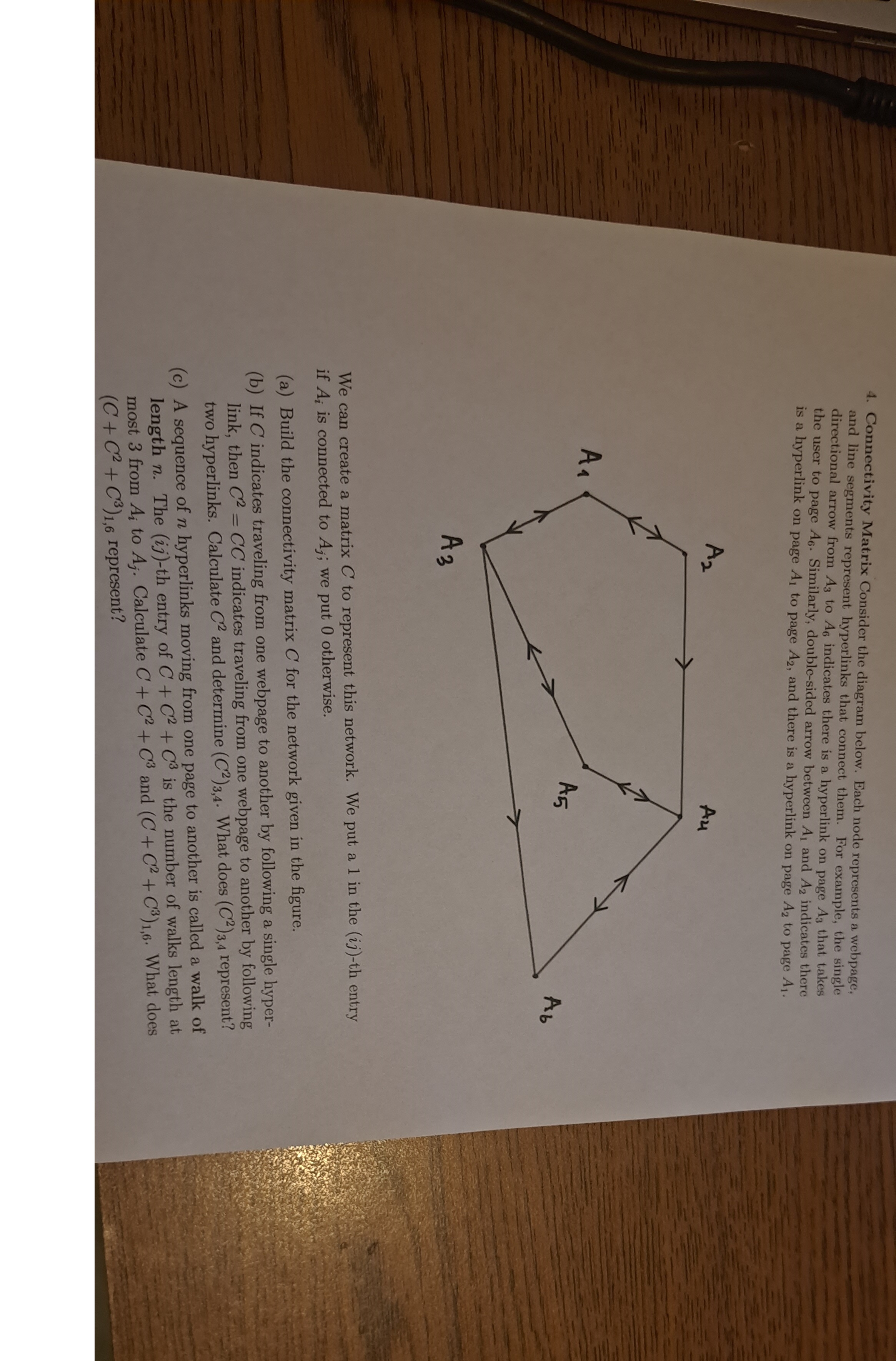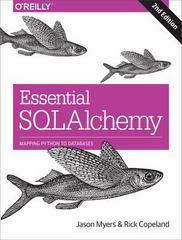Answered step by step
Verified Expert Solution
Question
1 Approved Answer
Connectivity Matrix Consider the diagram below. Each node represents a webpage, and line segments represent hyperlinks that connect them. For example, the single directional arrow
Connectivity Matrix Consider the diagram below. Each node represents a webpage, and line segments represent hyperlinks that connect them. For example, the single directional arrow from to indicates there is a hyperlink on page that takes the user to page Similarly, doublesided arrow between and indicates there is a hyperlink on page to page and there is a hyperlink on page to page
We can create a matrix to represent this network. We put a in the ijth entry if is connected to ; we put otherwise.
a Build the connectivity matrix for the network given in the figure.
b If indicates traveling from one webpage to another by following a single hyperlink, then indicates traveling from one webpage to another by following two hyperlinks. Calculate and determine What does represent?
c A sequence of hyperlinks moving from one page to another is called a walk of length The ijth entry of is the number of walks length at most from to Calculate and What does represent?

Step by Step Solution
There are 3 Steps involved in it
Step: 1

Get Instant Access to Expert-Tailored Solutions
See step-by-step solutions with expert insights and AI powered tools for academic success
Step: 2

Step: 3

Ace Your Homework with AI
Get the answers you need in no time with our AI-driven, step-by-step assistance
Get Started


